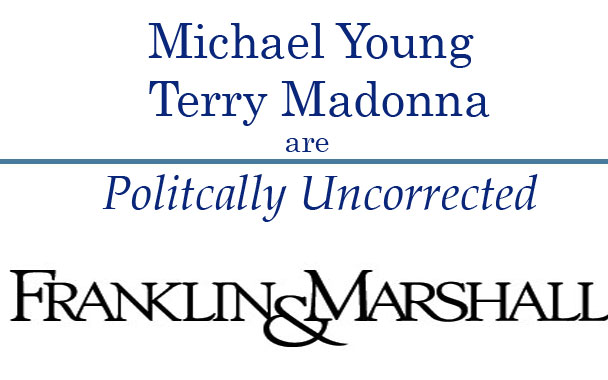Spotlight on PA Special Congressional Election

A Congressional District that no longer exists – two opponents who will never face each other again- a race that will have itself little or no direct influence – the balance of power in Congress – and yet much of the nation’s political establishment is watching it as if it were a presidential race.
Maybe it is!
We are talking, of course, about the unexpectedly close, high stakes special March 13th election in the (old) Pennsylvania 18th between Republican Rick Saccone and Democrat Connor Lamb.
As we enter March, it’s game on in the 18th-as this first congressional race in the 2018 midterm has drawn enormous attention, receiving more national coverage than any congressional election in modern Pennsylvania history.
So what’s the fuss about a district, once represented by both John Heinz and Rick Santorum – one that is scheduled to disappear by Pennsylvania’s May 15th primary, one that has 70,000 more Democrats than Republicans and one that has habitually voted Republican in recent years? Simply put, the fuss is that both Republicans and Democrats see this race as a referendum on President Trump and his policies –a referendum in a district Trump won by 20 points in 2016 while the last GOP incumbent was winning without an opponent. What’s at stake is not whether Democrats win control of the House, but whether this race presages a giant Democratic electoral wave that will sweep Republicans from power in November ‘s midterms.
It didn’t start that way. At the outset, the race looked like a lead pipe sure thing for Republicans. Trump’s 20-point victory margin in the district was preceded by Romney’s 17-point win in 2012. The previous Republican incumbent, Tim Murphy, had been elected to eight consecutive terms back to 2002, the last two times without an opponent.
But expectations of a once comfortable GOP victory have morphed into a fierce electoral battle that many now see as too close to call. How did a “can’t lose” turn into a panicked “must win” for Republicans?
Two factors have led to the tightening of the race, and explain why an upset victory by Lamb is possible: the candidate himself, and the type of campaign he is running.
- The candidate – Beginning in the 1990’s voters in the southwestern part of Pennsylvania began to defect from national Democrats and their increasingly culturally liberal agenda. Consequently, if Democrats in 2018 had run their stock urban, liberal candidate, the race would have ended early. But instead, Democrats ran a charismatic, youthful looking candidate with the perfect resume for the district. Some even liken him to the legendary western Pennsylvania politician John Heinz – sans Heinz’s huge fortune. Lamb is a former marine and prosecutor whose position on contemporary issues knit a near perfect fit with voters. Consistently, Lamb has presented himself as a moderate, who is pro-life, pro-gun, and reliably pro-union. He has been outspoken about beefing up the nation’s military–while placing major focus on the war against opioid addiction, something that has afflicted southwestern Pennsylvania far more than nationally. Nor is he loath to talk about his patriotism and his religion-he’s Catholic.
- The campaign – Democrats have found a method to energize voters not seen in a generation: a genuine grassroots campaign featuring the candidate himself, ringing doorbells and posting yard signs, augmented by a small army of campaign volunteers that the campaign says have reached some 100,000 voters with old fashion door knocking. Conversely, his opponent, Rick Saccone, eschewing Lamb’s brand of retail politics has mostly run a more conventional campaign, doing organized staged events and relying on mass media. Lamb has not ignored fundraising. Outside spending, however, has favored Saccone about 7 to 1 as GOP PACS have poured money into the race. But Lamb has managed to raise himself about five times Saccone’s own contributions, giving him about one half million more on hand in the races final days. The subtext in the race is Trump. Not on the ballot, he is certainly on the minds of district voters. Moreover, there is no doubt that his brand is hurt badly if the outcome is close or if there is a Democrat victory. But Trump’s approval rating is still above water (51%) in the district, so it’s not so clear how much the race is actually a referendum on Trump-versus voters choosing between two candidates, one (Lamb) highly impressive, while the other (Saccone) running a slow, stolid and unimaginative campaign.
Indeed, Republicans are very nervous. Some have suggested Trump’s surprise announcement dramatically raising steel tariffs was linked to GOP worries about the race. In fact, the President is expected to visit the district a few days before the election.
As March rushes toward Election Day, the GOP faces the daunting prospect that the election will be close and might even be a loss in a district that should not have been in play. Either an outright loss or a close result will dim the party’s hopes for momentum going into the midterms. The GOP possible outcomes seem to be “bad” (close election) or “worse” (a loss).
It is never good when bad is the best one can do.






